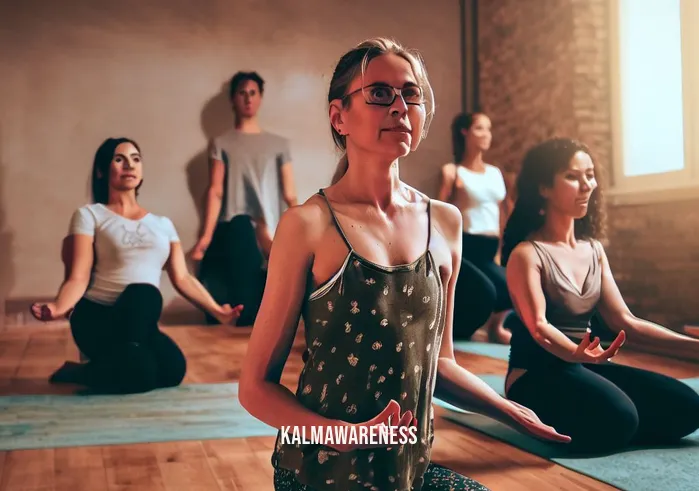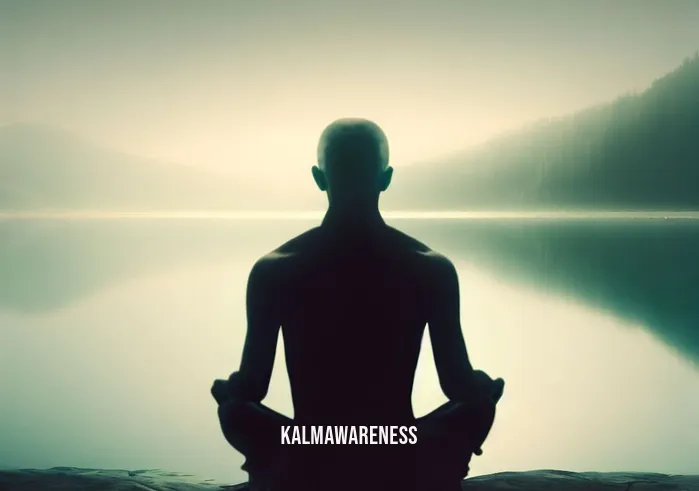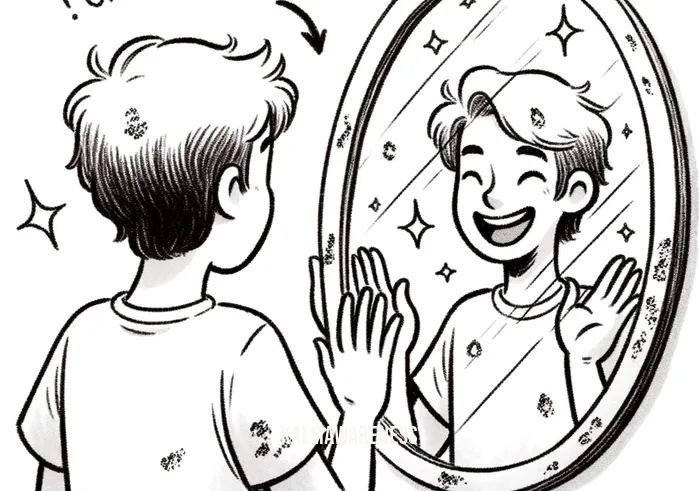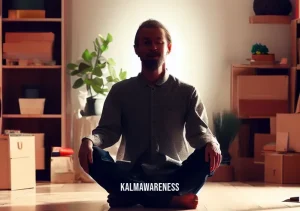Meditation for Rest: Unlocking the Power of Mindful Sleep and Relaxation
In our modern world, filled with the cacophony of technology, endless tasks, and the pressure to always be “on,” finding genuine rest can often feel like a challenge. But imagine a tool, ancient and profound, that not only allows for deep relaxation but also cultivates mindfulness, relieves stress, and improves overall well-being. This tool is the practice of “meditation for rest”. In this series, we will delve into the intricate connection between meditation and rest, exploring the diverse methods and benefits it offers.
The Origin and Essence of Meditation for Rest
Meditation, an age-old practice, finds its roots in various cultures and traditions worldwide. From the tranquil ancient African meditation techniques to the serene practices in Eastern philosophies, it’s evident that humankind has long sought solace in this introspective exercise. Central to meditation is the art of mindfulness, a practice that reminds us that life is available only in the present moment.
But what does it mean to meditate for rest? At its core, meditation for rest focuses on harnessing the power of the mind to achieve a state of deep relaxation and peace. It’s not just about shutting out the world, but rather finding tranquility amidst the chaos, akin to the calm that can be found in the practice of mindful martial arts.
The Benefits: Beyond Just Sleep
While the most apparent advantage of meditation for rest is improved sleep quality, its benefits stretch far beyond the confines of our nightly slumber.
Stress Relief: Regular meditation helps in managing and reducing stress. It offers a respite from our habitual thinking patterns, allowing us to break free from the shackles of constant worry and anxiety.
Mindfulness and Presence: With practices such as meditation in motion or even short bursts of micromeditating, individuals learn to be present. It fosters a mindset where one can appreciate the now, leading to a more fulfilling life experience.
Enhanced Physical Well-being: Meditation has been linked to various health benefits, including improved cardiovascular health, better digestion, and even relief during phases like menopause.
Breathing: The Key to Restful Meditation
At the heart of meditation for rest lies the potent act of mindful breathing. Breathing techniques serve as a bridge between the mind and body, uniting them in a dance of relaxation. Whether you’re engaging in meditation pleine conscience or seeking peace through mindful skills, the breath is the ever-present guide, leading you to restful shores.
“Breathing in, I calm my body. Breathing out, I smile. Dwelling in the present moment, I know this is a wonderful moment.” — Thich Nhat Hanh
Setting the Stage for In-Depth Exploration
As we stand at the threshold of this enlightening journey, it’s essential to realize that meditation for rest is not a mere tool but a transformative lifestyle choice. With each segment, we will delve deeper, unearthing its layers and understanding its profound impact.
From exploring the influence of mindfulness in various spheres like mindful muscle training, mindful hiking, and even in academic settings with meditation stories for students, to understanding its cultural nuances in contexts like mindful en español, there’s much to uncover.
The myriad ways in which meditation touches lives, from the business sphere with platforms like the renewed mind employee portal to the holistic realm with practices like gratitude yoga in Princeton, underpin its universal appeal and relevance.
With a vast expanse of knowledge to explore, and numerous avenues to travel, it’s time to embark on this enlightening expedition. Join us in the next segment as we delve

The Science and Techniques Behind Meditation for Rest
Meditation, often associated with spiritual awakening and mindfulness, has slowly transitioned from being a mystical Eastern practice to a scientifically-acknowledged method for achieving relaxation and holistic well-being. When specifically focused on rest, meditation offers unique tools to enhance sleep quality, reduce sleep onset time, and enhance the rejuvenating effects of sleep.
Why is Meditation for Rest So Important?
In the hustle and bustle of modern life, quality rest has become a rare luxury. Persistent sleep disturbances, the pressures of daily life, and a relentless influx of information can wear down even the strongest among us. Meditation for rest, or as some may call it, relaxation meditation, serves as an antidote to these challenges. It:
- Improves Sleep Quality: Ensuring we wake up feeling refreshed.
- Reduces Sleep Onset Time: Helping us fall asleep quicker.
- Enhances Dream Recall: Providing insights into our subconscious.
- Minimizes Nightly Disturbances: Lessening instances of waking up during the night.
- Deepens the Sleep Cycle: Allowing for a more profound rest.
Techniques to Achieve Restful Meditation
There are various techniques within the meditation umbrella, each serving a specific purpose. For achieving deep rest, the following methods have proven to be remarkably effective:
Body Scan Meditation: This method, often associated with mindfulness in motion, involves mentally scanning each part of the body, acknowledging sensations, and releasing tension.
Guided Imagery: A meditation consultant often employs this technique. It involves visualizing calming scenarios or sequences, guiding the mind to a place of serenity.
Deep Breathing Techniques: Building on the foundation from our previous segment, focused breathing can be a pivotal tool in achieving rest. Specific patterns, such as the 4-7-8 breathing technique, are known to induce sleep.
Mindful Awareness: Rooted in the principles of mindful miracle practices, this technique is about being present in the moment, acknowledging thoughts, and letting them pass without judgment.
Sound Meditation: Using calming sounds or mindful music, this technique relies on auditory stimuli to induce relaxation.
Comparing Meditation Techniques for Rest
To provide a clearer picture of the different methods and their respective benefits, here’s a table that contrasts these techniques:
| Meditation Technique | Primary Benefit | Ideal For |
|---|---|---|
| Body Scan Meditation | Tension Release | Those with physical stress or discomfort |
| Guided Imagery | Mental Calming | Individuals with active imaginations or anxiety |
| Deep Breathing Techniques | Quick Relaxation | Those needing immediate sleep assistance |
| Mindful Awareness | Thought Processing | Individuals with racing thoughts at night |
| Sound Meditation | Sensory Relaxation | Those responsive to auditory stimuli |
Looking Ahead: Meditation in Different Contexts
While meditation for rest is a universal tool, its application and relevance can differ based on contexts and situations. For example, mindful hiking combines the beauty of nature with mindfulness, offering a unique meditative experience. Similarly, mindful skills applied in professional contexts can transform workplaces into zones of calm efficiency.
Conclusively, as we’ve explored the depth of techniques and science behind meditation for rest, it’s clear that this practice is more than just a nightly ritual. It’s a comprehensive lifestyle choice that holds the potential to transform our nights and, consequently, our days. As we proceed to the next segment, get ready to dive even deeper, exploring meditation’s role in different life stages and contexts. Let the journey of discovery and profound rest continue!

Journey to Hope: The Inspirational Tales of Meditation for Rest
Meditation, while deeply rooted in ancient practices and spirituality, has made its way into the modern world as a beacon of hope and inspiration. Individuals from all walks of life are increasingly turning to meditation, seeking solace in its embrace, not just for spiritual growth, but for tangible, everyday benefits. Especially when it comes to rest, meditation proves to be more than a nightly ritual—it becomes a journey of self-discovery, hope, and rejuvenation.
Stories that Resonate
Across the globe, there are numerous individuals who’ve tapped into the profound effects of meditation, finding rest in its serene depths:
Alex’s Quest for Sleep: After years of battling insomnia, Alex, a tech professional, stumbled upon mindful en español, a meditation technique designed to resonate with his cultural roots. Not only did it improve his sleep, but it also strengthened his connection to his heritage.
Samantha’s Transformation: A high school teacher, Samantha, found herself increasingly stressed, leading to restless nights. She discovered solace in meditation stories for students. Inspired, she introduced meditation into her classroom, transforming not only her sleep patterns but also her students’ approach to stress and exams.
Michael’s Journey of Mindful Movement: An athlete facing a career-threatening injury, Michael turned to mindful martial arts to find both physical healing and mental relaxation. This combination not only hastened his recovery but gave him deeper, more restorative sleep.
Echoes of Hope: Quotes that Inspire
Throughout history, thinkers, leaders, and spiritual gurus have spoken about the profound connection between restful meditation and hope. Here are some that truly resonate:
“Meditation is the tongue of the soul and the language of our spirit.” – Jeremy Taylor
“Sleep is the best meditation.” – Dalai Lama
“Through meditation, the Higher Self is experienced.” – Bhagavad Gita
“Restful was the mind, waiting for the hope to come.” – Lucy Larcom
“In the stillness of meditation, I find true peace and rest.” – Anonymous
Meditation for Rest: A Tapestry of Benefits
Beyond the personal stories and inspirational quotes, meditation for rest serves as a bridge connecting myriad benefits. From enhancing mindful muscle training and aiding professionals through the renewed mind employee portal, to enriching lives via mindfulness books for teens, meditation’s reach is truly vast.
Furthermore, the inspiration drawn from meditation doesn’t stop at personal tales or historical quotes. Institutions like the Penn mindfulness class have researched and validated the profound impacts of meditation on rest, sleep quality, and overall mental well-being.
Preparing for the Path Ahead
In the tapestry of life, rest plays an integral role. And in the quest for true, rejuvenating rest, meditation emerges as a beacon of hope and inspiration. These tales of transformation, coupled with the wisdom of ages, emphasize the profound impact and relevance of meditation in our modern world.
As we continue this journey, the next chapter promises to delve deeper into the practical side of meditation for rest. How can you incorporate it into your daily routine? What are some beginner-friendly techniques? Stay with us to discover the answers and continue this transformative journey.

The Pillars of Meditation for Rest: A Comprehensive Breakdown
Meditation for rest is not merely a concept; it’s a multidimensional practice encompassing various techniques, philosophies, and outcomes. While it might seem intricate at first, breaking it down can simplify our understanding and help us integrate it seamlessly into our lives. Let’s journey into the core elements of meditation for rest, making this seemingly intricate art both accessible and actionable.
Core Techniques of Meditation for Rest
Several techniques form the foundation of restful meditation. Each caters to different needs and preferences, ensuring that there’s something for everyone.
Guided Meditation: This involves following the voice or instructions of a guide, often available through resources like the meditation consultant portal, guiding the practitioner through a visualization or relaxation process.
Mantra Meditation: A mantra, a word, or a series of words are repeated, allowing the individual to focus and enter a state of deep relaxation.
Progressive Relaxation: Sequentially tensing and then relaxing different muscle groups. It’s an excellent technique for those interested in mindful muscle practices.
Mindfulness: Rooted in practices like mindful martial arts, it emphasizes being present in the moment, observing thoughts without judgment.
Visualization: Creating a mental sanctuary, visualizing serene and calming environments to instill a sense of peace.
Factors Enhancing Meditation for Rest
Certain factors can amplify the effects of meditation, ensuring deeper rest and rejuvenation.
Consistency: Just like mindful hiking yields more benefits when done regularly, the same applies to meditation. Regularity fortifies its effects.
Environment: A calm, quiet space devoid of distractions. Consider adding elements like soft lighting or gentle mindful melodies.
Timing: While meditation can be beneficial any time, practicing it during the golden hours for mindfulness can optimize its effects.
Posture: Maintaining a comfortable yet alert posture. This ensures the body isn’t distracted by discomfort while meditating.
Intent: Setting a clear intention before each session. It could be to achieve restful sleep, reduce anxiety, or merely to find calm.
Obstacles and Their Solutions
In the path of meditation for rest, practitioners might face certain challenges. Here’s a concise list of potential hurdles and ways to navigate them:
- Distractions:
- Problem: External noises or thoughts interrupting the meditation process.
- Solution: Use noise-cancelling headphones or guided meditation tracks.
- Physical Discomfort:
- Problem: Finding it hard to sit for extended periods.
- Solution: Use props like cushions or consider practicing meditation in motion.
- Restlessness:
- Problem: Feeling agitated or restless when trying to meditate.
- Solution: Start with shorter sessions and gradually increase the duration. Mindful breathing can also help center the mind.
- Skepticism:
- Problem: Doubting the benefits or questioning its effectiveness.
- Solution: Refer to scientific studies or personal testimonials. The Penn mindfulness class is an excellent resource in this context.
Gearing Up for the Grand Conclusion
The practice of meditation for rest, while ancient in its origin, remains relevant in the ever-evolving tapestry of modern life. Through this chapter, by dissecting its various components, we hope to have demystified its essence and made it more approachable.
But our journey doesn’t end here. In the next chapter, we will draw our learnings together, creating a holistic roadmap for those looking to integrate meditation for rest into their lives. Prepare for insights, actionable tips, and the final leg of this enlightening expedition!

Reflecting on the Journey: Meditation for Rest and Beyond
As our exploration of meditation for rest draws to a close, we’re reminded of the ancient wisdom and modern revelations that intertwine to form this practice’s core. The tales of hope, the structured breakdowns, the inspiring quotes—all have painted a holistic picture of a journey toward tranquility, self-awareness, and rejuvenation.
The Heart of Our Discoveries
Revisiting our journey’s pivotal points:
Roots and Relevance: From the ancient corridors of African meditation traditions to the bustling, modern classrooms of mindfulness for teens, we’ve traced the timeless relevance of meditation as a tool for rest.
Science Meets Spirituality: We delved deep into techniques, understanding how ancient practices are now backed by modern science and studies, like those from the renowned Penn mindfulness class.
Inspiration and Hope: Personal tales of transformation, peppered with wisdom from luminaries, showcased that the path to restful meditation is both a personal and universal quest.
From Learning to Living: Applying Our Insights
But knowledge, they say, is of no value unless you put it into practice. So, as we conclude:
Start Small: If you’re new, begin with short meditation sessions, perhaps tapping into micromeditating to weave mindfulness into daily moments.
Explore and Evolve: Just as mindful martial arts combines mindfulness with movement, explore hybrid techniques that resonate with you.
Share and Grow: Knowledge becomes richer when shared. Maybe initiate a discussion on the renewed mind employee portal or form a local meditation group.
A Call to Explore Further
While this series offers a deep dive into meditation for rest, the world of mindfulness and well-being is vast and ever-evolving. We invite you to explore more enlightening content on our platform. Whether you’re curious about mindful hiking or wish to delve deeper into practices like gratitude yoga in Princeton, our repository of knowledge awaits.
And if ever in doubt, revisit these chapters. The path to understanding is often circular, where revisiting insights can provide deeper clarity.
In Gratitude and Anticipation
To our cherished readers—thank you. Your curiosity, engagement, and quest for knowledge are what drive us to explore, research, and present insights. As we close this chapter on meditation for rest, remember that every end is a new beginning. Stay tuned to our platform, where more enlightening journeys await.
Here’s to restful nights, serene minds, and a life full of mindfulness! 🌙🍃





